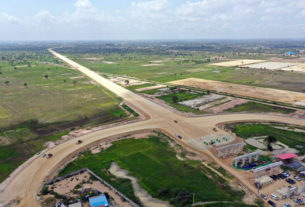High-speed rail considered
China offers to help with costs, technology
The Thai government could join with the Chinese government to build the country’s first high-speed rail network, says Finance Minister Korn Chatikavanij.
 Mr Korn told the Bangkok Post the two countries were looking to co-operate in a government-to-government joint venture to build a high-speed rail line from
Mr Korn told the Bangkok Post the two countries were looking to co-operate in a government-to-government joint venture to build a high-speed rail line from
The Chinese government would be responsible for capital and investment costs in the rail system, with the Thai side responsible for procuring land. Deputy Premier Suthep Thaugsuban discussed the investment programme with Chinese authorities during a visit to
Science and Technology Minister Virachai Virameteekul, who also accompanied Mr Suthep on the trip, said the Thai delegation held talks on ways to improve bilateral rail links and the high-speed rail project with Lin Zhijun,
Mr Korn said the high-speed rail programme would be a key pillar in the government’s plans to improve infrastructure networks, cut logistics costs and strengthen the medium-term competitiveness of the Thai economy.
The rail line, which would run
Mr Korn estimated the entire project could be completed within three years.
“Altogether, the State Railway of Thailand will invest over 200 billion baht in upgrades over the next five years, with the target of doubling the average speed of our rail system. We have to rid the system of bottlenecks,” said Mr Korn.
He said another regional project would create a standard-gauge rail link from
The government’s Thai Khem Khaeng infrastructure programme calls for up to four high-speed rail routes to be built over the next several decades, linking Bangkok to Rayong in the East; Chiang Mai in the North; Padang Besar on the Malaysian border; and Nong Khai in the Northeast.
Mr Korn said the priority would be given to the Rayong link, given the economic importance of the Eastern Seaboard and the clear superiority of a high-speed rail link in facilitating transport between the area and the country’s capital.
While a Chiang Mai-Bangkok rail link would cut travel time to just three hours, air travel between the two cities takes only one hour, he noted.
“With limited resources, we have to focus on what delivers the greatest value,” Mr Korn said.


